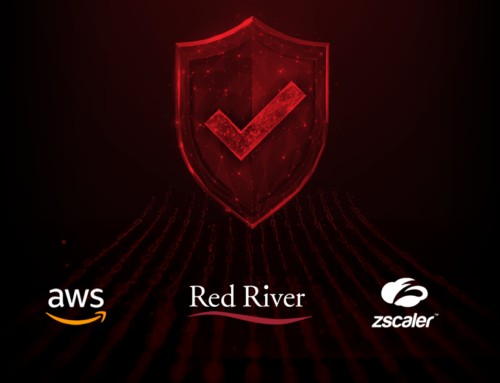
What Are the Zero Trust Pillars? (And Other Zero Trust FAQs)
Imagine an intruder has broken into your home or business with the intention of stealing your most valuable personal property. What are your options?
Most people would promptly dial 911, knowing in the back of their minds there was a strong chance the thief would make off with the goods before the police arrived.
This scenario mirrors one many business professionals lose sleep over. What if a hacker breached your network, triggering an alert, and your only option was to call for a cybersecurity expert? Again, by the time even the quickest security professional responds, your digital assets could have been compromised.
The principles of zero trust architecture offer a solution to both of these scenarios. In the case of a physical burglary, the property owner could have installed safes, panic rooms and security doors to prevent criminals from stealing money, jewelry and other valuables. In the digital break-in situation, zero trust infrastructure separates sensitive, valuable and confidential data, putting valuables out of reach.
A zero trust cybersecurity posture assumes hackers are already inside your system. However, they are in for a rude awakening when they discover you enlisted the support of a cybersecurity firm that boxed them into a digitally valueless space.
Zero Trust Uses Outside-the-Box Thought Leadership
Accomplishing this seemingly impossible feat of frustrating a thief who has already gained illegal entry seems both improbable and counterintuitive. It’s improbable because the hacker possessed the skillset and determination to breach an otherwise secure network. The cybercriminal may have somehow uncovered a staff member’s username and password, used brute force to overcome firewalls and anti-virus software or deployed malware, among other methods. Despite these nefarious efforts, a zero trust cybersecurity strategy serves as a fallback position. The strategy keeps prized information safe, even as the hacker relishes in the fact they have successfully penetrated a network.
To some degree, it may sound counterintuitive to harden a company’s attack surface and integrate fail-safe measures. However, the statistical facts clearly demonstrate that too many hackers are overcoming the available tools to bar entrance.
Cybersecurity professionals recommend integrating this approach because data breaches continue to rise. From 2022 to 2023, the number of data breaches increased by 20 percent, and ransomware gangs increased their marks by 77 percent during that period. The unfortunate success of unscrupulous individuals prompted security experts to counter these attacks with zero trust.
Living in the digital age calls for innovative approaches that work. By better understanding the 7 pillars of zero trust and how this strategy differs from virtual private networks, among others, it’s obvious why it delivers undisputed value.
What are the 7 Pillars of Zero Trust?
Along with accounting for data breaches in progress, the zero trust model views other cybersecurity issues through a unique lens. For instance, the pillars of zero trust do not make common assumptions that in-house devices are somehow more trustworthy than remote laptops and smartphones.
That’s largely because it does not necessarily approach cybersecurity through linear perimeter thinking. In other words, zero-trust architecture isn’t designed merely to keep intruders out. It simultaneously protects a network from external and internal threats. These 7 pillars of zero trust highlight why industry leaders are adopting this comprehensive data protection method.
1: Workforce Security
Zero trust pillars revolve around ways to secure wide-reaching vulnerabilities. For many organizations, their dedicated staff members are often the greatest weakness. Depending on the study, human error was the root cause of data breaches 74 to 95 percent of the time. A Stanford University professor pegged it at 88 percent in 2023. With subpar passwords and hacker trickery, people make missteps that zero trust can effectively avoid.
Part of the zero trust model, multi-factor authentication thwarts most data breach efforts. When a staff member enters their username and password to log into a network, a code is sent to a secondary device. The person must then type in the digits to gain final approval. Because hackers are extremely unlikely to hold sway over the secondary device, criminals cannot leverage legitimate login credentials to orchestrate a data breach.
2: Device Security
Identification and authorization are foundational pillars of zero trust security. Device security involves thoroughly vetting endpoint options that employees and other stakeholders use to log into a network. These laptops, tablets and smartphones are then approved. Should someone attempt to use a non-authorized endpoint device, entrance to the system is denied.
In this fashion, device security essentially doubles down on multi-factor authentication. Not only does a remote or in-house user need to enter a code, their device is also being checked simultaneously. In some zero trust models, decision-makers can add geolocation tracking to prevent hackers from using fakes. If the access request originates from the wrong location, the device and login attempt are rejected.
3: Workload Security
It’s important to keep in mind that zero trust security does more than safeguard digital assets and establish network access protocols. Operating under the assumption that hackers may circumvent security obstacles, ongoing monitoring and threat detection are employed to maintain workforce security.
Deploying advanced technologies such as AI and machine learning, massive amounts of data are crunched in real time. Anomalies that might otherwise fly under the radar are made plain. Should a network user deviate from routine practices or attempt to gain access to unauthorized data, proactive measures are taken to expel the threat.
4: Microsegmentation
As the earlier burglary scenario articulated, the goal behind zero trust infrastructure is to block hackers from stealing confidential and valuable information, even during a breach. To accomplish this, data and applications are compartmentalized. Digital rooms house different types of data, and each space operates under unique security protocols. Some zero trust strategies go as far as to encrypt all data at all times, whether stored or transmitted, in order to, again, double down on protection.
5: Visibility and Analytics
For the zero trust model to deliver proactive security benefits, advanced analytics and visibility are essential components. As AI and machine learning evaluate trends, anomalies and user deviations, cybersecurity professionals gain a rare opportunity to deal with emerging threats in two distinct ways.
The first approach mirrors less advanced cybersecurity methods. Those tasked with defending the operation react to potential threats. After assessing the legitimacy of the alert, genuine threats can be expelled. The second option is what generally separates this and other zero trust pillars from reactive models. Real time visibility augments security professionals’ ability to take proactive threat-hunting measures. When hackers attempt to get a foot in the door, it gets slammed shut.
6: Automation and Orchestration
With proactive technologies in place, zero trust delivers cost-effective automation and automation. A variety of tasks can be handled without human interaction, freeing up IT, security and other personnel. Automation and orchestration also help maximize the speed and efficiency of systems, enhancing workflow and communication. Those are ways zero trust provides value-added benefits to organizations that invest in the innovative approach to data protection.
7: Network Security
Zero-trust network security differs from other protections by making authentication an ongoing process. When network users access data and applications, it provides constant vigilance. Even the cleverest hacker will be discovered because each step puts activity under a security microscope.
Zero Trust Network Access vs. a VPN (Virtual Private Network)

In managed IT and cybersecurity circles, some zero trust vs. VPN debate persists. Although the pair are — for all intents and purposes — wildly different, the key differences highlight the value of transitioning to zero trust.
A VPN model falls into what many call perimeter cybersecurity. Remote workers avoid utilizing public Wi-Fi by logging into a personal VPN approved by the company. This policy prevents hackers from setting up faux platforms targeting internet users at coffee shops and libraries, among other free Wi-Fi locations. Having private, secure internet access also allows network users to effectively hide in plain sight. Cybercriminals cannot see the VPN, thus establishing a perimeter. As the saying goes: out of sight, out of mind.
Zero-trust network access, referred to as a ZTNA, functions differently. In terms of defending the attack perimeter, ZTNA leverages a variety of solutions, including multi-factor authentication, device recognition and geolocation. These make gaining entrance to a business network difficult for bad actors. Along with ongoing verification, it adopts zero trust principles such as data segmentation and least privilege user profiles.
Companies that assign a VPN for remote workers are taking a proactive approach to cybersecurity. The major drawback to this option is that it does not necessarily consider what happens if and when a hacker breaches the system. However, industry leaders who invest in scalable ZTNA protections create a determined cybersecurity approach that works tirelessly to detect, deter and repel hackers on an ongoing basis.
IMPLEMENT ZERO TRUST CYBERSECURITY WITH THE HELP OF RED RIVER
At Red River, we work with companies to craft cybersecurity solutions that protect sensitive and valuable information. If you are interested in implementing zero trust architecture, contact us today. Let’s get the process started.
Other Zero Trust FAQs
Does the federal government require contractors to adopt zero trust architecture?
The U.S. Department of Defense (DoD) put forward an aggressive program designed to transition companies working in the military industrial base to adopt its zero trust maturity model. The initiative is underway, and the DoD expects contractors and supply chain businesses to align with its model by 2027. Similar to the DoD’s Cybersecurity Maturity Model Certification (CMMC) mandate, companies are required to adopt protections based on the type of data they store and transmit.
What types of cyberattacks can zero trust prevent?
It’s important to understand that no cybersecurity defense can stop well-funded and skilled adverse persistent threats. If a rogue nation throws enough resources and time behind a digital assault, eventually, the hacker will gain entrance. What zero trust accomplishes that many other strategies cannot is to deter threats and hamstring hackers. These include malware, ransomware, supply chain, insider threats, denial-of-service (DoS) and brute force, among others. Even if a threat gains access to a system, microsegmentation and least privilege login profiles often render a cybercriminal’s efforts fruitless.
Will zero trust negatively affect productivity?
Integrating the 7 pillars of zero trust will not hamper organizational productivity. In fact, the exact opposite holds true. The security policy uses AI and machine learning to deter, detect and expel threats before they damage files and applications or cause a system shutdown. Although elements such as multi-factor authentication require network users to take a few seconds to input a code, overall productivity remains seamless.
Does zero trust architecture help meet regulatory compliance requirements?
The short answer is: Yes. When fully integrated, zero trust delivers ongoing cybersecurity, monitoring and data protection that further or achieve regulatory compliance goals. It far exceeds break-and-fix methods that involve reacting to incursions after the fact. It works with enterprise-level firewalls, anti-virus software and other standard practices outlined in data protection laws and regulations. Harnessing automation and orchestration, zero trust ranks among the most proactive cybersecurity measures available, bar none.
Can zero trust work with legacy systems?
In some cases, a cybersecurity expert may be able to create a plan that leaves older resources in place. Unfortunately, legacy tech tends to impede zero trust effectiveness. Scrapping outmoded technologies and upgrading to create a cohesive and secure network is generally a good idea.
How can I transition to zero trust cybersecurity?
Transitioning to the zero trust method involves significant planning, decision-making and care during implementation. It usually starts with a complete network risk assessment conducted by a third-party cybersecurity firm. Key stakeholders review a report highlighting system strengths, vulnerabilities and best practices. The leadership team and cybersecurity experts develop an implementation plan that usually includes vetting endpoint devices, data microsegmentation and crafting a least privilege policy for users. By enlisting an experienced managed IT services provider with zero trust architecture expertise, hurdles can be overcome.

written by
Corrin Jones
Corrin Jones is the Director of Digital Demand Generation. With over ten years of experience, she specializes in creating content and executing campaigns to drive growth and revenue. Connect with Corrin on LinkedIn.




